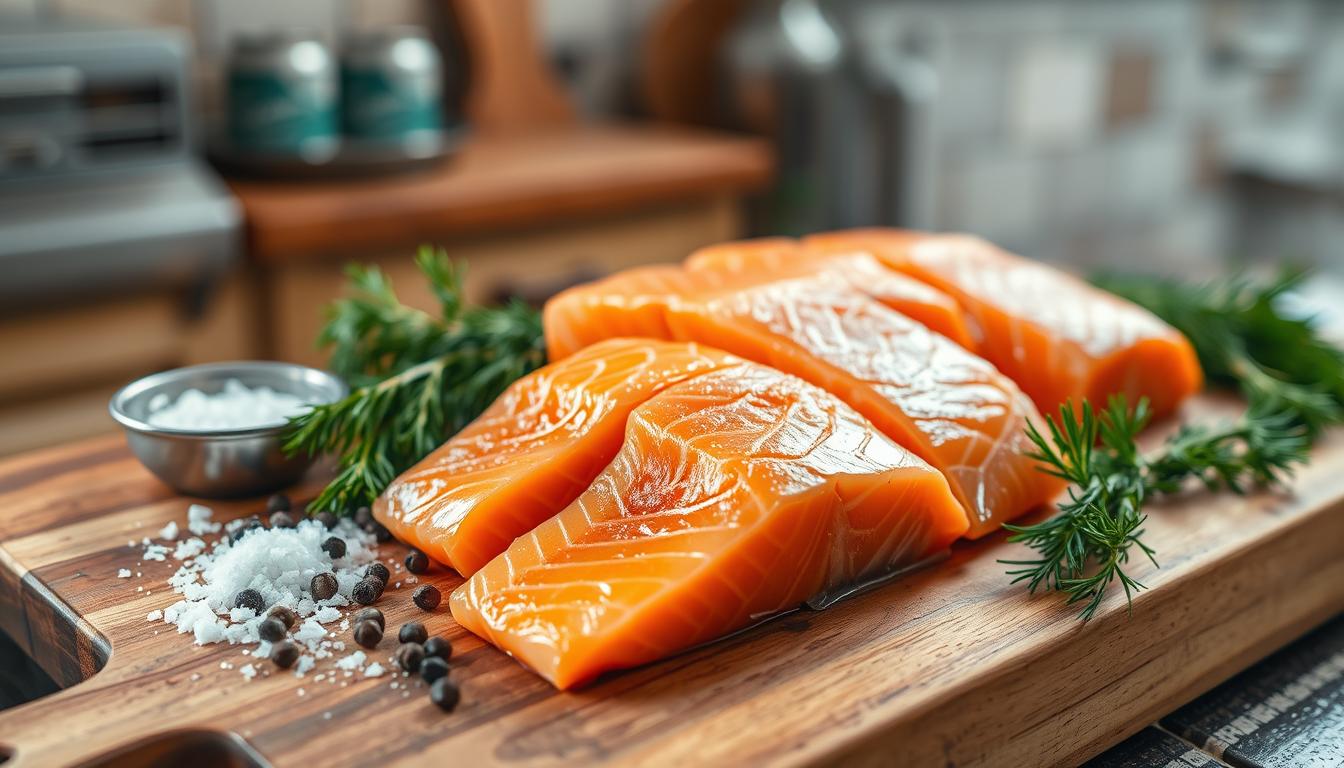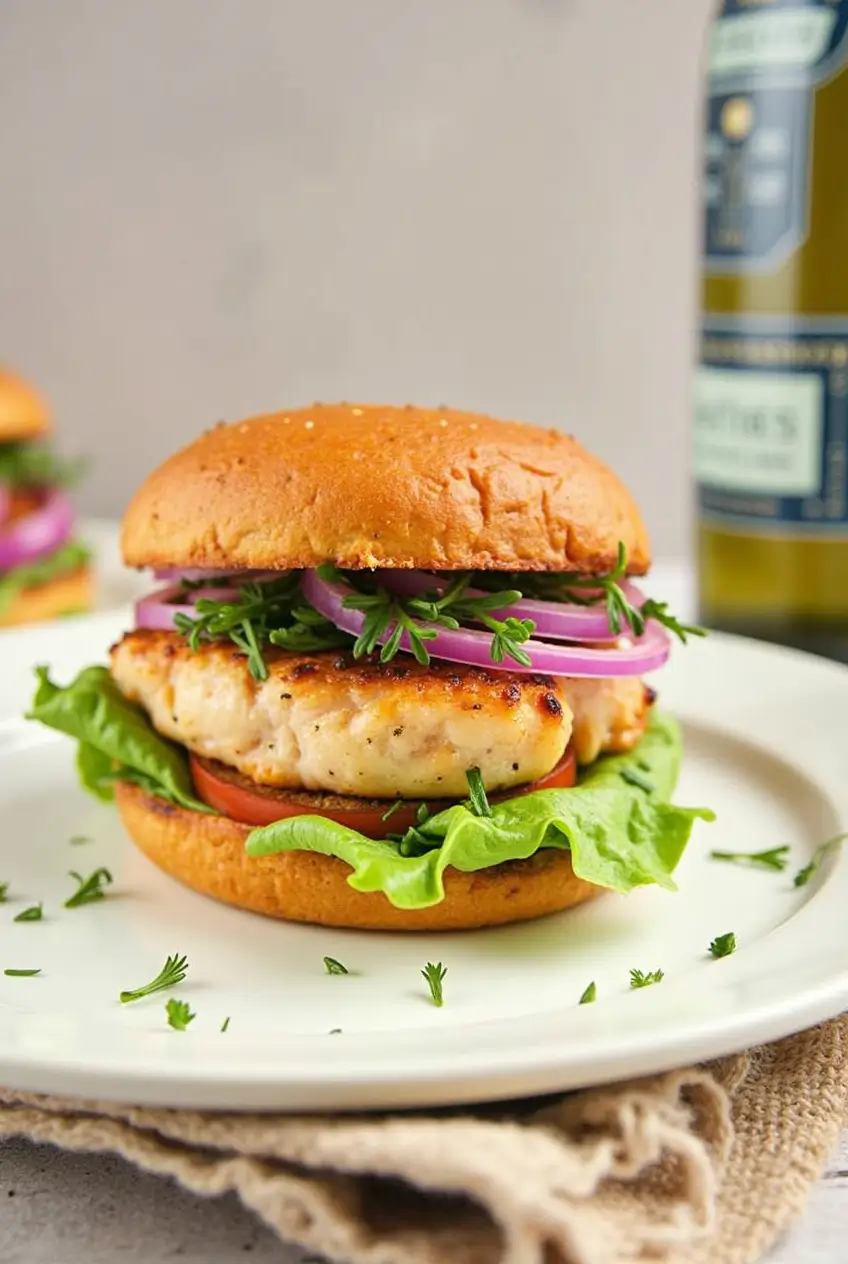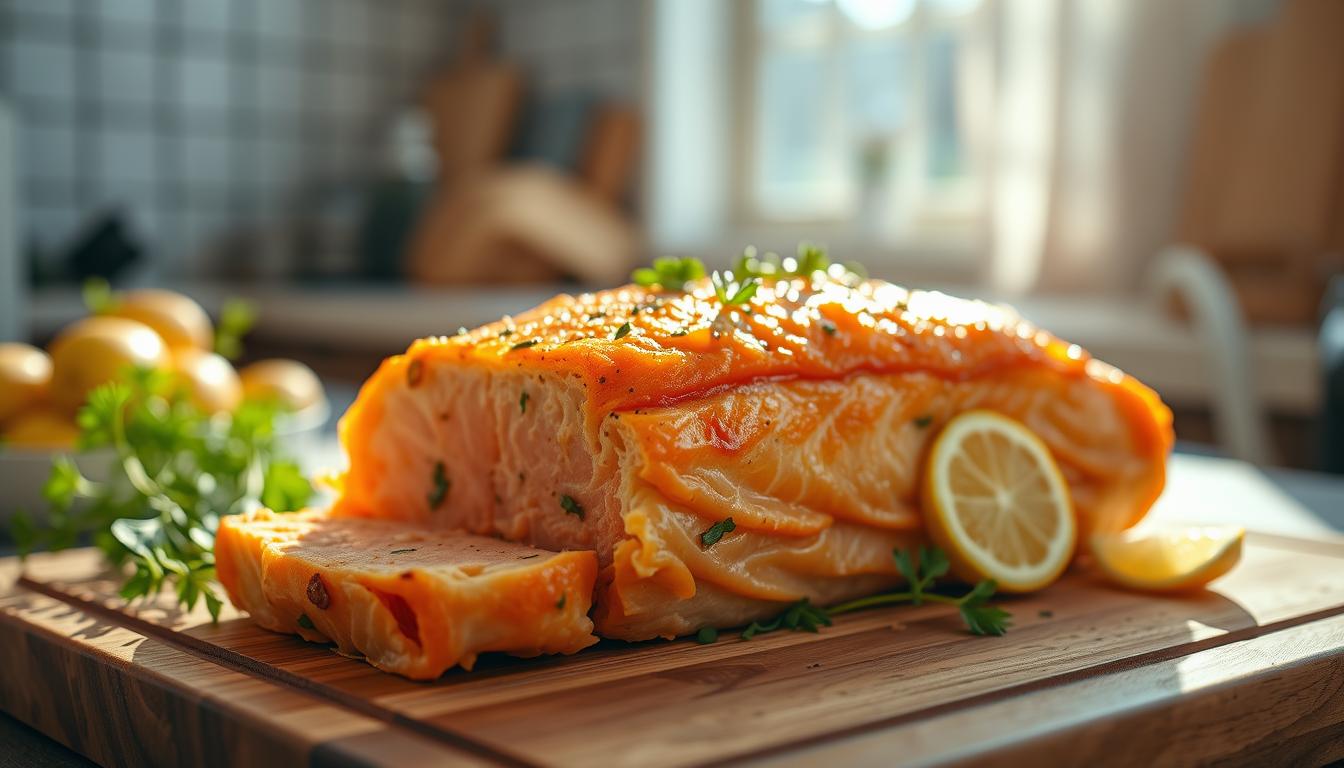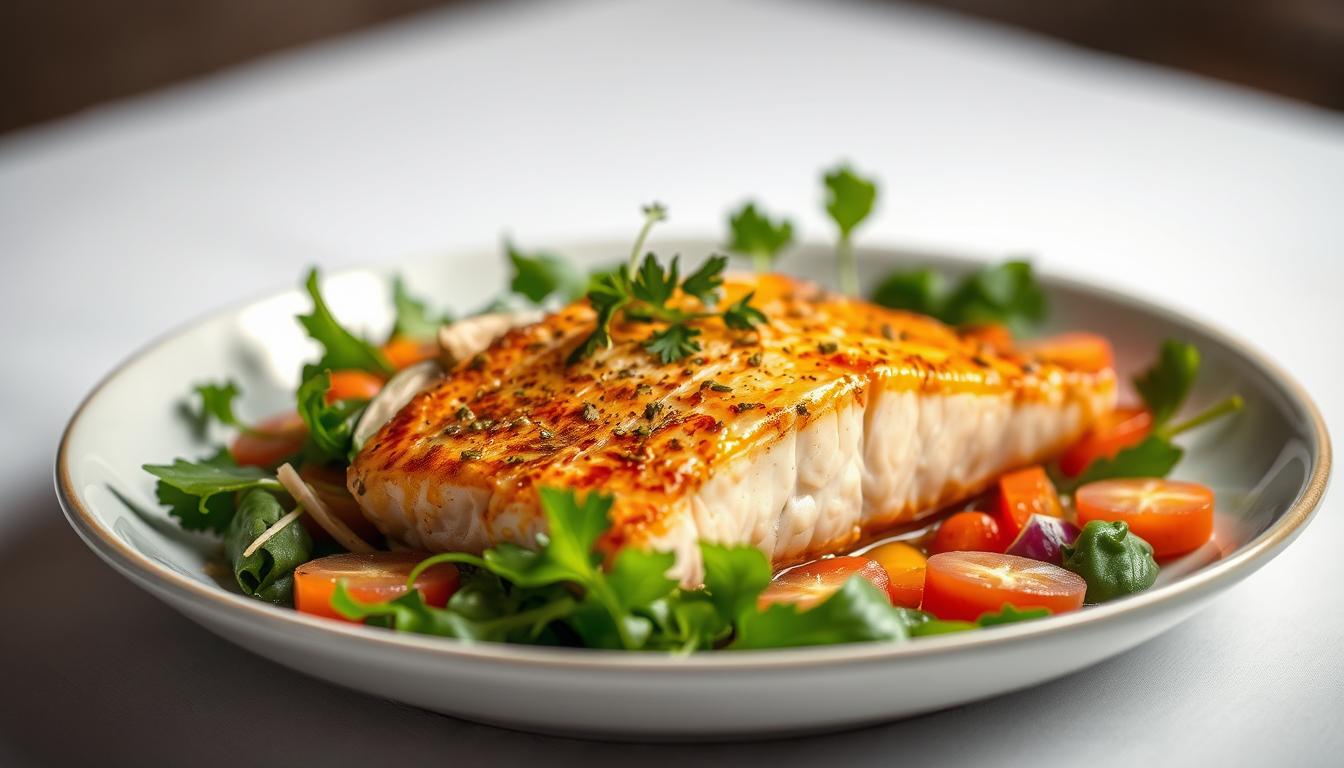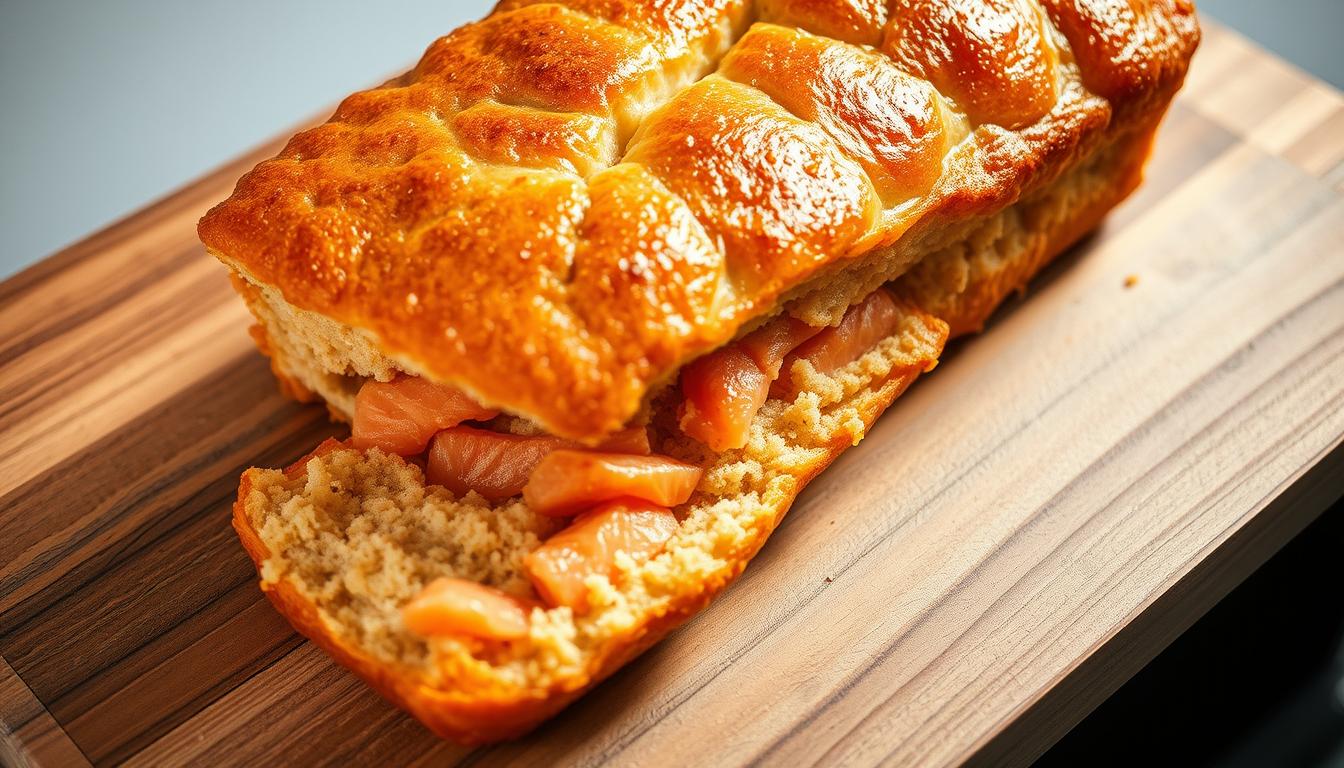Smoked Salmon Dry Brine Recipe
Want to make your seafood dishes more delicious? Try making flavorful smoked salmon at home. It’s easy and rewarding with the right guide.
Using a dry brine method is a great way to enhance the salmon’s flavor. This guide will help you make a dish that will wow everyone.
Follow the steps in this article to make top-notch smoked salmon at home. You’ll need just a few ingredients and simple steps. Soon, you’ll be enjoying tasty smoked salmon.
Table of Contents
Smoked Salmon Dry Brine
The Art of Brining Salmon Before Smoking
To make perfect smoked salmon, you need to master brining. Brining the salmon before smoking is key. It makes the flavor deeper and the texture firmer, so it doesn’t fall apart when cooked.
Why Brining Is Essential for Smoked Salmon
Brining is crucial for great flavor and texture. It uses salt and sugar to pull out moisture, focusing the flavors. This makes the salmon more flavorful and tender, ideal for smoking.
Dry Brine vs. Wet Brine: Understanding the Differences
There are two brining methods: dry and wet. Dry brining uses a salt, sugar mix rubbed on the salmon. Wet brining soaks the salmon in saltwater.
| Characteristics | Dry Brine | Wet Brine |
|---|---|---|
| Method | Rubbing with salt, sugar mixture | Soaking in saltwater solution |
| Texture Outcome | Firmer, denser texture | Moist, but potentially softer |
| Flavor Profile | More concentrated flavors | More evenly distributed flavors |
Dry brining is simple and effective for top-notch smoked salmon. Yet, the choice between dry and wet brining depends on what you like and what you aim for.
Essential Ingredients for a Perfect Smoked Salmon Brine Recipe
To make a great smoked salmon brine, you need to know the key ingredients. The quality and mix of these ingredients greatly affect the taste and texture of your salmon.
Base Ingredients: Salt and Sugar Ratios
The foundation of your brine is salt and sugar. The salt to sugar ratio is key for a balanced taste. A 1:1 ratio is common, but you can tweak it to your liking.Salt preserves the salmon and boosts its flavor. Sugar adds sweetness to balance the salt.
| Ingredient | Ratio | Purpose |
|---|---|---|
| Salt | 1 part | Preservation and flavor enhancement |
| Sugar | 1 part | Balancing flavor |
Flavor Enhancers: Herbs and Spices
To deepen your brine’s flavor, add herbs and spices. Black pepper, garlic powder, and crushed bay leaves are popular choices. They not only enhance taste but also make the salmon more aromatic.
For example, a famous chef once said:
“The right herbs can elevate the flavor of smoked salmon to new heights.”
Optional Additions for Customized Flavor Profiles
You can also add unique ingredients to your brine. Try citrus zest, coriander seeds, or a splash of whiskey for a special taste. The goal is to experiment and find your favorite mix.
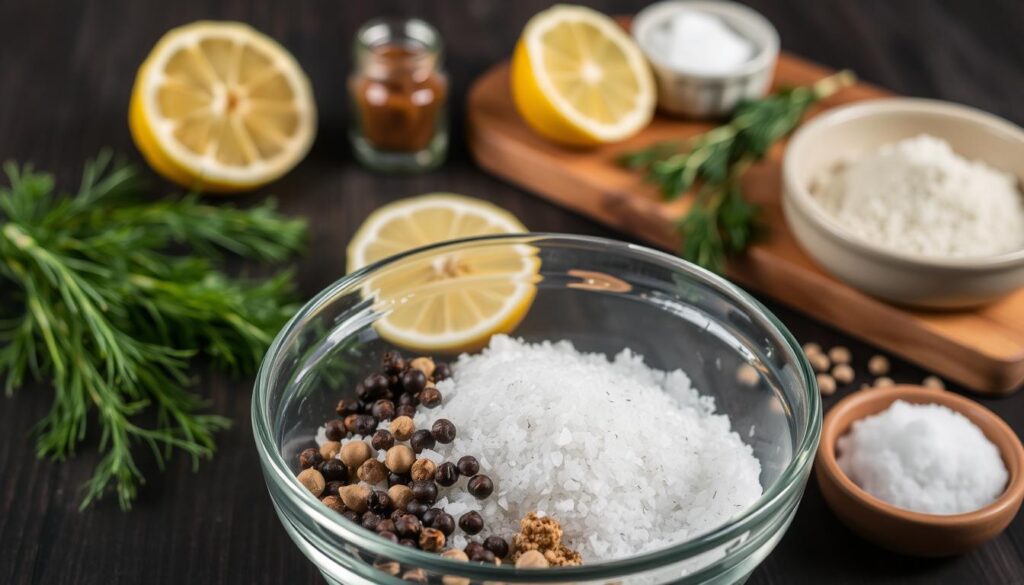
Equipment Needed for Brining and Smoking Salmon
To brine and smoke salmon well, you need the right tools. You’ll need a few key items to make sure your salmon turns out great.
Brining Containers and Tools
You’ll need a big container for brining. A rimmed baking sheet or a large plastic container works great. Also, a wire rack is essential to keep the salmon off the bottom for even brining.
Don’t forget a rimmed baking sheet to catch any spills during brining.
Smoking Equipment Recommendations
For smoking, you can use a smoker, charcoal grill, or gas grill. If you don’t have a smoker, a charcoal or gas grill with wood chips can also work. Here’s a quick look at your options:
| Equipment | Pros | Cons |
|---|---|---|
| Smoker | Easy temperature control, consistent smoke flavor | Higher cost, requires dedicated space |
| Charcoal Grill | Can achieve high heat, smoky flavor | More difficult to control temperature, requires charcoal |
| Gas Grill with Wood Chips | Easy to use, less mess than charcoal | May not achieve as intense smoky flavor, requires wood chips |
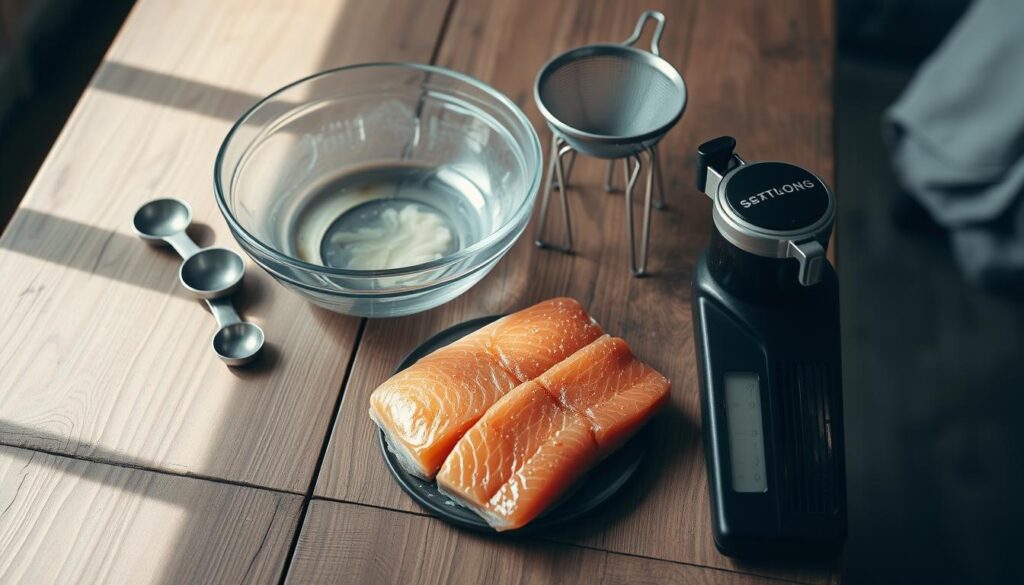
Selecting the Best Salmon for Smoking
Smoking salmon starts with picking the best fish. This choice affects the taste and texture of your smoked dish. The right salmon can make your simple smoked salmon brine taste amazing. But the wrong choice might not be as good.
Types of Salmon and Their Flavor Profiles
Each type of salmon has its own taste. Farm-raised Atlantic salmon tastes rich and buttery. Wild king salmon has a strong, complex flavor. Sockeye and Coho salmon offer a mix of taste and texture that’s perfect for smoking.
- Atlantic Salmon: Rich, buttery flavor
- King Salmon: Robust, complex taste
- Sockeye Salmon: Bold flavor with a deep red color
- Coho Salmon: Balanced flavor and texture
Fresh vs. Frozen Considerations
Fresh and frozen salmon both have their advantages. Fresh salmon is often chosen for its texture. But frozen salmon can be just as good if it’s been frozen right.
The important thing is to find salmon that’s been frozen to kill parasites. This makes it safe to eat.
How to Check for Quality
To pick the best salmon, look for firmness, shine, and a nice ocean smell. Stay away from salmon that’s soft, dull, or smells too fishy. For frozen salmon, check the packaging for damage or freezer burn.
The Best Smoked Salmon Brine Recipe: Classic Dry Brine
Now that you’ve picked the perfect salmon, it’s time to make the classic dry brine recipe. This method is simple yet effective. It boosts the flavor and texture of your smoked salmon.
Ingredient List and Proportions
The classic dry brine recipe uses brown sugar and kosher salt. These ingredients give a sweet and savory taste. Here’s what you need:
| Ingredient | Proportion |
|---|---|
| Brown Sugar | 1/2 cup |
| Kosher Salt | 1 cup |
| Optional: Other flavor enhancers (e.g., black pepper, dill) | To taste |
Step-by-Step Mixing Instructions
To mix the dry brine, put brown sugar and kosher salt in a bowl. You can add black pepper or dill for extra flavor. Mix until everything is well combined.
Application Techniques
To apply the dry brine, rub it all over the salmon fillet. Make sure to cover every part evenly. You can use your hands or a spatula. This ensures the flavor is consistent.
By using this classic dry brine recipe, you’ll get a delicious smoked salmon. It’s easy to make and needs just a few ingredients. It’s perfect for beginners.
The Brining Process: Step-by-Step Guide
To make perfectly smoked salmon, you must master the brining process. Brining involves several steps. These steps ensure your salmon is flavorful and textured. You’ll prepare the salmon, apply the dry brine, brine it for the right time, and then rinse and dry it.
Preparing Your Salmon
Before you start, make sure your salmon is ready. Pat it dry with paper towels to remove moisture. This helps the dry brine stick better. Also, check for pin bones or scales and remove them if needed.
Applying the Dry Brine
To apply the dry brine, sprinkle it over the salmon evenly. The mix usually includes salt, sugar, and flavor enhancers. Rub the mixture gently into the fish to make sure it sticks well.
Optimal Brining Times
The brining time depends on the salmon’s thickness. For most fillets, 2 hours is enough. But thicker ones might need up to 4 hours or even overnight in the fridge. Always keep the salmon cold to avoid bacterial growth.
Rinsing and Drying Techniques
After brining, rinse the salmon under cold water to remove salt. Dry it with paper towels, then let it air dry in the fridge for an hour. This step is key for creating a pellicle. The pellicle helps the smoke stick during smoking.
Smoking Your Brined Salmon to Perfection
Now that your salmon is brined, it’s time to smoke it. Smoking brings out amazing flavors. It’s all about the temperature, wood, and timing.
Temperature Guidelines
The best temperature for smoking salmon is 225 to 275°F. Keeping this temperature is key for great taste and texture. Low and slow is the way to go for smoking salmon. It lets the fish soak up smoky flavors slowly.
Use a thermometer to keep an eye on the temperature. This ensures you stay in the perfect range.
Wood Selection for Optimal Flavor
The wood you choose affects the salmon’s flavor. Alder, apple, and cherry woods are popular. Alder is classic for smoked salmon.
Try different woods to find the best match for your dry-brined salmon. The goal is to add flavor without overpowering the salmon.
Timing and Doneness Indicators
The smoking time varies based on the salmon’s thickness and the smoker’s temperature. Smoke for about 30 minutes to 1 hour per inch. The salmon should reach 145°F for safety.
Check for doneness by looking for firmness and flakiness. It should also have a deep, smoky color. A meat thermometer is the best way to check the internal temperature.
By paying attention to temperature, wood, and timing, you’ll get perfectly smoked salmon. This effort will make your dish a hit.
Alternative Smoked Salmon Brine Recipes
Explore new flavors in smoked salmon with different brine recipes. The classic dry brine is great, but you can also try unique tastes. You can make a simple brine by changing the ingredients to match your taste.
Sweet and Spicy Variation
Add brown sugar and red pepper flakes to your dry brine for a sweet and spicy flavor. The sweetness and heat mix well, making a complex taste. Just add 1 tablespoon of brown sugar and 1/2 teaspoon of red pepper flakes to your dry brine. This gives a nice contrast to the salmon’s richness.
Herb-Forward Recipe
Make your smoked salmon fresh with herbs like dill, parsley, or thyme. Add 2 tablespoons of chopped fresh herbs to your dry brine. The herbs will enhance the smokiness, making the flavor refreshing and aromatic.
Asian-Inspired Flavor Profile
Try soy sauce, ginger, and garlic for an Asian-inspired taste. Mix in 1 tablespoon of soy sauce, 1 teaspoon of grated ginger, and 1 minced garlic clove. This will give your smoked salmon a savory and umami flavor, great with Asian dishes.
Wet Brine Recipe for Smoked Salmon
Looking for a different way to brine your salmon? A wet brine recipe is a great choice. It involves soaking the salmon in a liquid mix of water, salt, and sometimes other flavors.
Ingredient List and Proportions
A classic wet brine for smoked salmon includes:
- 1 cup of kosher salt
- 1/2 cup of brown sugar
- 1 gallon of water
- Optional flavorings such as black peppercorns, bay leaves, or citrus slices
Mix the salt, sugar, and water in a saucepan. Heat it until the salt and sugar dissolve. Then, let it cool before adding any extra flavors.
Process Differences from Dry Brining
The main difference between wet and dry brining is the liquid solution in wet brining. This method spreads flavors more evenly in the salmon. It also keeps the salmon moister.
When to Choose Wet Brining
Choose wet brining for a tender and moist salmon. It’s perfect for bigger pieces of salmon. It also gives a different texture than dry brining.
Storing and Serving Your Smoked Salmon
Now that you’ve made your smoked salmon, let’s talk about how to store and serve it. It’s important to handle it right to keep it fresh and safe.
Proper Storage Techniques
Store your smoked salmon in an airtight container in the fridge. Wrap it tightly in plastic wrap or foil to keep moisture out. Keep it away from strong-smelling foods to avoid picking up odors.
Shelf Life Guidelines
Smoked salmon stays fresh in the fridge for about a week. If you won’t eat it in that time, freeze it. Frozen smoked salmon can last months. Just thaw it in the fridge or under cold water when you’re ready.
Serving Suggestions and Pairings
Smoked salmon is great in many ways. Try it on bagels with cream cheese and capers for a classic taste. You can also add it to salads, pasta, or use it as a topping. For a fancy appetizer, serve it on toasted bruschetta with lemon.
- Pair with cream cheese and bagels
- Add to salads or pasta
- Use as a topping for crackers or toast
Follow these tips to enjoy your smoked salmon at its best.
Conclusion
You now have the tools to make delicious smoked salmon at home. By following the guidelines and recipes, you can achieve professional-quality smoked salmon. You’ve learned how to balance flavor and texture perfectly.
Using a dry brine recipe gives you a more intense flavor and firmer texture. This method is simple and works well for both home cooks and professional chefs. Try different flavors and ingredients to create your own signature smoked salmon recipe.
With your newfound knowledge, you can enjoy smoked salmon all year. Impress your friends and family with your culinary skills. Whether you’re a seasoned chef or just starting, smoking salmon is now easy for you.

